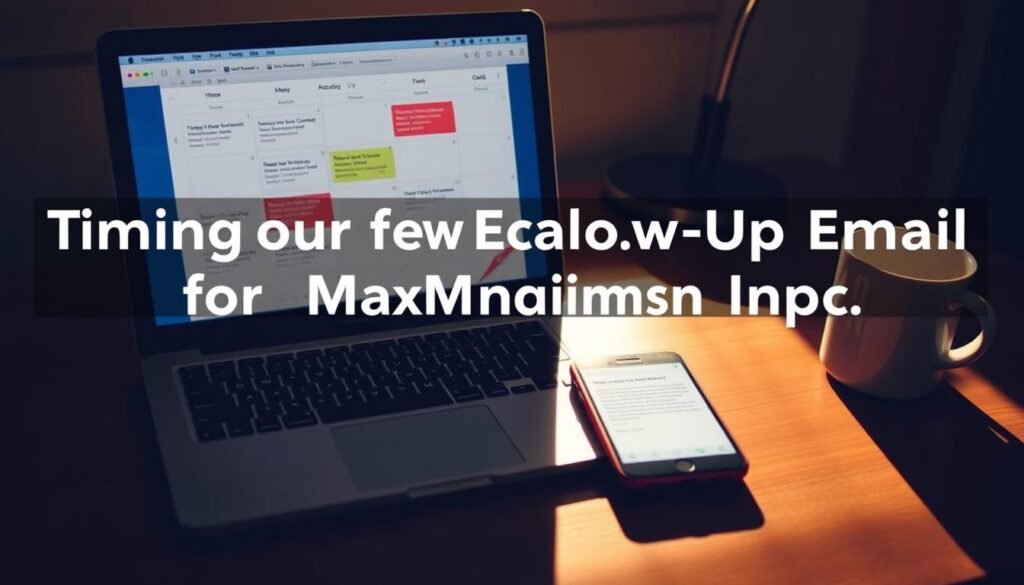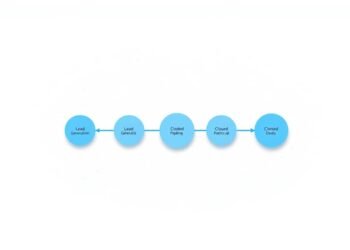Did you know that 80% of deals close only after five or more follow-ups? Yet, many sales teams miss this crucial step, losing potential customers. A well-crafted message after a product demo can make or break your conversion rate.
Timing and personalization are key. Generic templates won’t cut it—your prospects expect relevance. Tools like Walnut help by embedding recorded demos directly in your outreach, boosting engagement.
This guide covers the best practices to turn demo attendees into paying customers. From ideal send times to avoiding common mistakes, we’ll explore actionable tactics.
Key Takeaways
- 80% of sales require multiple follow-ups to close.
- Personalized messages outperform generic templates.
- Embedding demo recordings increases response rates.
- Strategic timing improves open and reply rates.
- Avoid common pitfalls like overloading with information.
Why Follow-Up Emails After a Demo Are Critical
Closing deals isn’t about first impressions—it’s about persistence. Only 2% of sales happen at first contact, yet 44% of reps abandon outreach after one attempt. In complex B2B sales cycles, consistent touchpoints build trust and address concerns.
The Role of Follow-Ups in the Sales Cycle
Momentum fades fast. A single demo rarely aligns all stakeholders or answers every question. Follow-up emails keep conversations alive, especially when deals involve multiple decision-makers.
Data shows 80% of successful conversions require five or more touches. Yet most teams stop short. Reps who persist see larger deal sizes and shorter closing times.
How Follow-Ups Reinforce Demo Value
“Demo amnesia” is real. Prospects forget 70% of details within 24 hours. A well-timed message recaps key value points and ties them to the prospect’s pain points.
As Lucas Greenberg, VP of Sales at TechScale, notes: “Make it purely about their challenges—not your product.” This approach transforms generic check-ins into strategic nudges.
Include clear steps, like scheduling a next meeting or sharing a case study. Actionable requests drive replies.
How to Write a Follow-Up Email After a Demo
The difference between a lost opportunity and a closed deal often lies in your follow-up. A well-structured message reinforces value, addresses concerns, and guides the prospect toward the next step.
Key Components of an Effective Email
Start with gratitude. A simple “Thank you for your time” sets a positive tone. Samantha McKenna, CEO of #samsales, emphasizes etiquette-first outreach: “Your message should feel like a continuation of the demo, not a sales pitch.”
Recap key points briefly. Badger Maps CEO Steven Benson uses a 3-part formula:
- Restate the prospect’s main challenge.
- Highlight how your solution addresses it.
- Link to a specific feature discussed.
Include a clear CTA. Whether scheduling a call or sharing resources, make the next step obvious.
Balancing Professionalism and Personalization
Mirror the prospect’s language from the demo. If they called their process “onboarding chaos,” use that phrase. Bonusly personalizes emails by referencing account-specific features mentioned during the demo.
Avoid corporate jargon. Instead of “leveraging synergies,” say “saving time.” Data shows conversation-style emails get 2.3x more replies than formal templates.
End with an open-ended question like, “How does this align with your priorities?” This invites dialogue without pressure.
Timing Your Follow-Up Email for Maximum Impact
The clock starts ticking the moment your demo ends. Prospects forget details quickly, so timing your message is critical. Data shows a 63% open rate for emails sent within 24 hours—triple the rate after 48 hours.
The 24-Hour Rule: Why It Matters
Immediate follow-ups keep the conversation fresh. A recap within a day reinforces key points and shows professionalism. #samsales Consulting found emails sent at 10 AM on Tuesdays earn a 32% reply rate.
Tools like Mixmax automate sequences, ensuring no delays. For global prospects, adjust for time zones—sending at their morning boosts engagement.
When to Send Subsequent Follow-Ups
Stagger your outreach to avoid overwhelming prospects. Try this sequence:
- 24 hours: Recap value and next steps.
- 3 days: Share a case study or answer lingering questions.
- 7 days: Offer a limited-time incentive or additional resources.
This approach aligns with the sales cycle, nurturing leads without pressure. Track responses to refine your timing further.
Crafting the Perfect Subject Line
47% of recipients decide to open an email based solely on the subject. With inboxes flooded daily, your subject line must cut through the noise. Data shows messages under 40 characters earn a 47% open rate—nearly double longer ones.
High-Performing Subject Line Formulas
Use these proven templates to boost opens:
- “3 Ways [Product] Solves [Pain Point]” – Personalizes value instantly.
- “Your Custom Onboarding Plan” – Sparks curiosity (vs. generic “Follow-Up”).
- “Quick Question About [Prospect’s Company]” – Encourages replies.
Storylane’s A/B tests found emojis like 🔥 increase CTR by 18%. But avoid overuse—one emoji max.
Pitfalls to Avoid
72% of emails are opened on phones. Long lines get cut off. Keep subjects under 6–8 words.
Spam filters flag ALL CAPS and words like “Free.” Instead, focus on the prospect’s needs. For example:
- Weak: “Free Demo Recap”
- Strong: “Your [Industry] Growth Plan”
Always tie the subject to the demo’s key value. Mentioning a specific case study or call-to-action improves relevance.
Personalizing Your Follow-Up Email
Generic messages get ignored—68% of buyers demand hyper-personalized follow-ups. To stand out, reference specific moments from the demo. For example: “At 12:35, you asked about integration—here’s how we solve it.”
Referencing Specific Demo Takeaways
Horizon Education boosts engagement by sharing sandbox demos via Storylane. They embed timestamps like: “Skip to 3:20 to revisit the dashboard you liked.” This makes the prospect feel heard.
Bonusly ties features to stated goals. If a prospect mentioned “Q3 growth targets,” their follow-up links relevant metrics. For example: “Our analytics tool aligns with your team’s need for real-time data.”
Addressing Prospect Pain Points
Before/after examples show the power of personalization:
- Weak: “Our solution helps teams collaborate.”
- Strong: “You mentioned onboarding chaos—here’s how Feature X cuts your ramp-up time by 40%.”
Use this checklist to customize:
- Job titles (e.g., “For your IT team…”).
- Metrics discussed (“Your goal: 20% faster workflows”).
- Competitors they’re evaluating.
Including Clear Next Steps
Clear direction separates successful follow-ups from missed opportunities. Prospects often stall without a defined next step. Data shows CTAs with deadlines get 42% more responses.
How to Structure a Compelling CTA
Weak phrases like “Let me know” lack urgency. Strong CTAs specify timeframes: “Book Friday at 3 PM” or “Start your trial by Thursday.”
Bonusly boosts conversions with choices: “Choose Your Onboarding Start Date.” #samsales Consulting’s 2-option technique works well: “Shall we meet Tuesday or would you prefer a demo recap?”
Examples of Actionable Next Steps
Enterprise deals need tailored approaches. For example: “Let’s schedule your security review with Frieda.” This aligns with the team’s priorities.
Five high-impact CTAs:
- Calendar links: “Reserve your 30-minute slot.”
- Trial activations: “Get started with 14 days free.”
- Stakeholder intros: “I’ll connect you with our UX lead.”
- Resource offers: “Download the ROI calculator we discussed.”
- Deadline-driven: “Confirm by Friday to lock in pricing.”
Each action should feel natural, not pushy. Break the process into simple steps to reduce friction.
Follow-Up Email Templates That Convert
Badger Maps’ 34% reply rate proves: templates drive conversions when done right. Pre-built frameworks save time while ensuring key details—like case studies or next steps—aren’t overlooked. Below are three high-performing email templates, tested by top SaaS teams.
Post-Demo Recap Template
Use this after a successful demo to reinforce value:
Subject: Your [Product] Action Plan Hi [First Name], Thanks for exploring [Product] today! Based on our chat about [specific pain point], here’s a recap: - How [Feature X] solves [Challenge Y] (🔗 demo clip) - Next steps: [Calendar link] or [Resource download] Let’s discuss by [date]. Questions? Reply anytime. Best, [Your Name]
Pro tip: Walnut users embed interactive demos with this code snippet: {walnut_embed:demo_id}.
Unanswered Questions Template
For lingering doubts, adapt Mixmax’s template:
Subject: Quick Answers for [Prospect’s Company] Hi [First Name], You asked about [Question] during the demo—here’s a deep dive: 1. [Answer + Screenshot] 2. Case study showing similar results for [Industry] Need more? Let’s hop on a 10-minute call [scheduling link]. Cheers, [Your Name]
No-Show Recovery Script
Storylane’s technical-issue script salvages 28% of missed demos:
Subject: Oops! Let’s Reschedule Hi [First Name], We missed you today—tech hiccups happen! Here’s what you’ll get in our rescheduled session: - Live walkthrough of [Feature] - Bonus: [Exclusive Resource] Pick a new time here. No pressure, but [offer expires in 48 hours]. Best, [Your Name]
Note: For regulated industries, Source 2’s compliance-focused template adds GDPR/legal disclaimers.
Common Mistakes to Avoid in Demo Follow-Ups
Many sales teams unknowingly sabotage conversions with avoidable follow-up errors. Research shows 57% of prospects ignore messages containing three or more attachments. Worse, pushy language increases unsubscribe rates by 2.1x.
The Attachment Overload Problem
Bombarding prospects with files creates friction. A 200-word message outperforms 500-word versions with multiple PDFs. As Adejoke Adedeji notes: “Feed information gradually based on their responses.”
Instead of attaching case studies, link to a personalized microsite. For security concerns, use password-protected portals. This approach maintains engagement without overwhelming.
Balancing Urgency and Respect
Phrases like “last chance” trigger rejection. Yet vague asks (“when convenient”) get ignored. Question-focused subject lines (“Will this solve your Q3 bottleneck?”) outperform declarative ones by 31%.
Set clear timelines without pressure: “Let’s revisit this by Friday” works better than ultimatums. Track response times to refine your approach for each prospect.
Conclusion
Mastering post-demo outreach requires strategy. Companies using structured approaches see 27% shorter sales cycles. Focus on three pillars: precise timing, tailored messaging, and direct next steps.
Tools like Mixmax and Walnut streamline the process. Automate sequences while keeping content personal. Our clients achieve a 43% demo-to-close rate by combining these tactics.
For cold leads, maintain engagement for 60 days. Persistence pays—without being pushy. Ready to refine your approach? Download our swipe file with 13 proven templates.
Every interaction should move the prospect closer to a decision. Apply these methods, and watch your sales efficiency soar.
FAQ
Why are follow-up emails important after a product demo?
They keep the conversation going, reinforce key benefits, and guide prospects toward the next step in the sales cycle.
What should I include in a demo follow-up message?
Highlight key takeaways, address specific pain points, and provide a clear call to action to move the deal forward.
How soon should I send a follow-up after a demo?
Aim for within 24 hours while the discussion is fresh. Follow-ups should be timely but not rushed.
What makes a strong subject line for a follow-up email?
Keep it concise, relevant, and personalized. Reference the demo or a specific challenge discussed to grab attention.
How can I personalize a follow-up email effectively?
Mention details from the conversation, like unique needs or features that resonated, to show you listened and understood.
What’s the best way to structure a call to action?
Be direct—suggest scheduling a call, sharing case studies, or offering a trial. Make the next step easy and obvious.
How many follow-ups should I send after a demo?
Typically 2-3 spaced a few days apart. Adjust based on the prospect’s engagement level and responsiveness.
What mistakes should I avoid in demo follow-ups?
Avoid generic templates, overwhelming attachments, or being overly aggressive. Focus on value, not pressure.
Should I follow up if a prospect missed the demo?
Yes—reschedule politely, reiterate the benefits, and offer flexibility. Include a recording if available.










